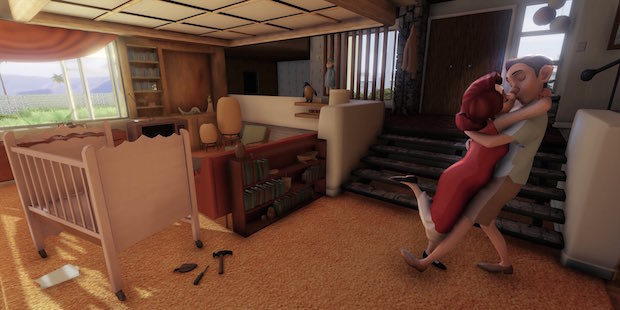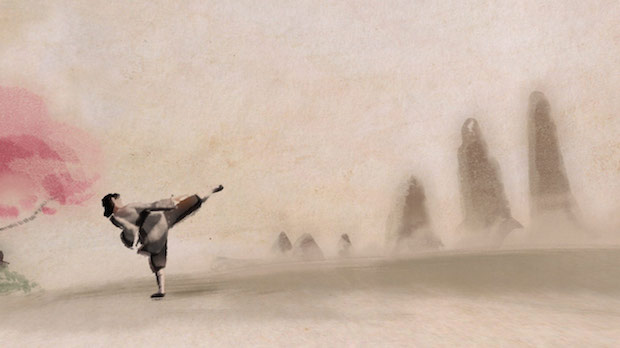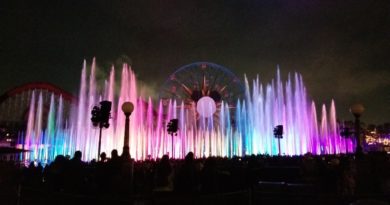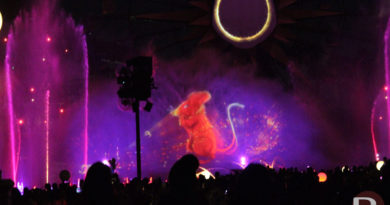“Short Circuit” Films–Big Dreams in Small Packages

Coming to Disney+ on January 24 is “Short Circuit,” a series of 14 animated shorts telling stories of a human exchange student in an alien school, a girl’s first haircut, a boy’s pet elephant, a raindrop and more. Each short is less than three minutes long, and carries a unique director’s tag.
This series is a selection of shorts made through a program that allowed any Disney Animation Studios employee to submit an idea and see their vision brought to film in a four month production period. The animators, lighters and production assistants that directed these short created them as experimental films whose only audience would be those within the studio. But with the advent of Disney+, a selection of shorts were chosen to bring this unique project to the world outside the Burbank lot.
I was invited to screen all 14 shorts and meet with some of the creative team. All of the shorts are worth watching and unique in their own ways, I will highlight three that standout, not only amongst the “Short Circuit” line up, but also in the long history of Disney animated shorts. These shorts showcase how a program like this one where experimentation is valued over profit margins gives rise to a deeper vulnerability, diverse stylistic influences and disruptive narrative styles.

“Cycles” directed by Jeff Gipson is, among the three, the short that stylistically adheres most to recent Disney pictures. Though Disney and Pixar shorts are known to be tearjerkers, “Cycles” tackles a subject unlikely to be explored for a mass market: the emotional journey of moving a parent or grandparent out of their forever home and into assisted living. Gipson’s short was created as a virtual reality experience where the viewer could don VR glasses and walk through the settings and memories of the life lived in his grandmother’s home. “Cycles” makes use of time flashes in a unique way, to go backwards instead of forwards. In the short’s runtime, the audience is taken back in time from the decision to move out of the house to a couple’s golden years to holiday’s with children to their first steps over the threshold in order to understand how a life lived transforms a house into a home.

While “Cycles” spins through a lifetime to understand a moment, Jerry Huynh’s “Jing Hua” zooms in on a single moment of grief. “Jing Hua” uses a style completely unique to what’s been used before, accessing calligraphy, water color and traditional Chinese painting to illustrate the feelings of a kung fu artist who has lost her teacher. Like most of the shorts, this one features no dialogue, but the exhalations and groans of the woman combined with the mournful cello score form their own eulogy. “Jing Hua’s” martial artist uses a magical form of kung fu to draw a landscape of grief from delicately shaped petals to rough hewn mountains through movements that Huynh likened as much to lyrical dance as to martial arts.

The most visually unique of the line up is “Zenith,” directed by Jennifer Stratton. Amongst the hundreds of people employed to create the worlds of animated features, the role of a lighter is probably one of the most important and the least understood. One needs only to watch “Zenith” to fully appreciate the role of lighting in an animated film. The short generally abandons narrative structure, weaving a loose story so as not to detract from the literally heavenly visuals. “Zenith” follows an ethereal stag as it spreads its luminous tracks into constellations and super novas across an otherwise dark galaxy. It’s hard to overstate how truly gorgeous the colors, lighting, movement and textures are of this film.
“Cycles” is vulnerable and mature in a way that many shorts don’t get the opportunity to be. “Jing Hua’s” narrative, style and scenario are specific in a manner that diverges from the universal nature of most Disney pictures. And “Zenith” is so singularly focused on awe and artistry that it is allowed to abandon a strict narrative structure in order to focus on simply eliciting wonder. These shorts highlight most strongly in their cohort the differences of when a short is made for mass consumption and when it is made as a creative exercise, an experiment to test the boundaries and skills of arguably the best animation studio in existence.


